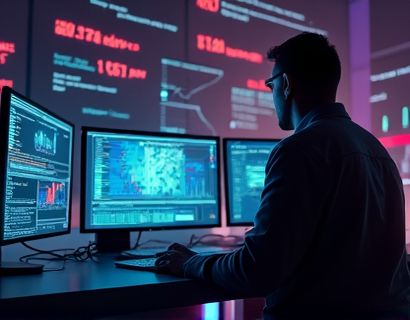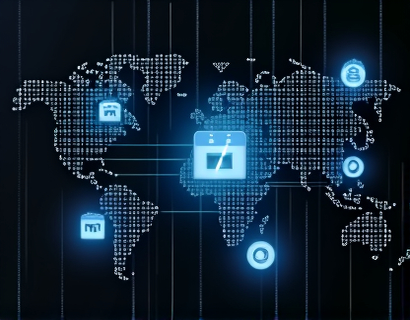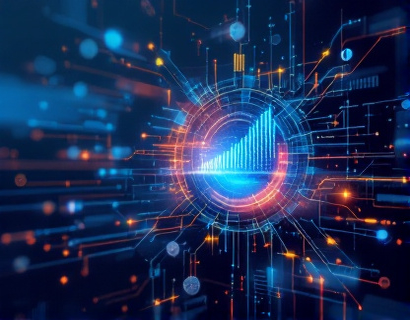Blockchain-Powered Asset Tokenization: Transforming Real-World Assets for Enhanced Market Accessibility and Liquidity
In recent years, the intersection of blockchain technology and traditional asset management has given rise to a revolutionary approach: blockchain-powered asset tokenization. This innovative method transforms real-world assets into digital tokens, offering unprecedented opportunities for enhanced market accessibility and liquidity. By integrating physical assets into a secure and transparent digital ecosystem, asset managers and investors can now leverage the benefits of blockchain to optimize their portfolios and expand market participation.
Understanding Asset Tokenization
Asset tokenization involves the creation of digital tokens that represent ownership or rights to a specific real-world asset. These assets can range from real estate properties and infrastructure to artworks and commodities. The process begins with the identification and selection of suitable assets, followed by the creation of a smart contract on a blockchain platform. This smart contract defines the rules and parameters for the token, ensuring that it accurately reflects the underlying asset's value and characteristics.
The tokenization process is facilitated by blockchain's inherent properties, such as immutability, transparency, and decentralization. Each token is uniquely identified and recorded on the blockchain, providing a tamper-proof record of ownership and transactions. This digital representation allows for fractional ownership, enabling multiple parties to invest in and benefit from a single asset without the need for physical possession.
Enhancing Market Accessibility
One of the most significant advantages of asset tokenization is the democratization of access to high-value assets. Traditionally, investing in real estate, art, or other tangible assets required substantial capital and often involved complex legal and administrative processes. Tokenization breaks down these barriers by allowing smaller investors to participate in the market with minimal entry requirements. A single high-value asset can be divided into thousands of tokens, each representing a fraction of the asset's value, making it accessible to a broader audience.
For instance, a commercial property worth millions can be tokenized into thousands of shares, each costing a few hundred dollars. This not only lowers the investment threshold but also increases the liquidity of the asset. Investors can now buy, sell, and trade these tokens on decentralized exchanges, similar to cryptocurrencies, without the need for intermediaries. This increased accessibility fosters a more inclusive financial ecosystem, where individuals with limited capital can diversify their investments and gain exposure to previously exclusive asset classes.
Improving Liquidity
Liquidity is a critical factor in asset management, as it determines how easily an asset can be bought or sold without significantly impacting its price. Traditional real-world assets are often illiquid due to their physical nature and the time-consuming processes involved in transactions. Tokenization addresses this issue by providing a seamless and instantaneous trading experience on blockchain platforms.
With digital tokens, asset owners can quickly convert their holdings into cash or other assets, and vice versa. The 24/7 nature of decentralized exchanges ensures that trading can occur at any time, enhancing market efficiency. Moreover, the transparency of blockchain technology allows all participants to view real-time transaction data, reducing information asymmetry and fostering trust among market players. This increased liquidity not only benefits individual investors but also enhances the overall market functionality, leading to more stable and efficient pricing mechanisms.
Benefits for Asset Managers
Asset managers stand to gain significantly from the adoption of blockchain-powered asset tokenization. The technology streamlines various aspects of asset management, from due diligence and valuation to trading and compliance. Smart contracts automate many of these processes, reducing the need for manual intervention and minimizing the risk of errors or fraud.
For example, in real estate investment trusts (REITs), tokenization can simplify the distribution of dividends and the management of property portfolios. Smart contracts can automatically allocate dividends to token holders based on predefined rules, ensuring timely and accurate payments. Similarly, in the art market, tokenization can provide a transparent and verifiable provenance for artworks, reducing the risk of forgeries and enhancing the authenticity of transactions.
Asset managers can also leverage tokenization to create new investment products and strategies. By combining tokens with other digital assets, such as cryptocurrencies or derivatives, they can offer diversified and tailored investment portfolios to their clients. This flexibility allows asset managers to meet the evolving needs of their customers and stay competitive in a rapidly changing market.
Challenges and Considerations
Despite its numerous benefits, blockchain-powered asset tokenization is not without challenges. Regulatory uncertainty remains a significant hurdle, as governments and financial authorities are still grappling with how to classify and regulate these new financial instruments. Compliance with existing laws and the development of new regulatory frameworks are essential to ensure the sustainable growth of the tokenization market.
Technical challenges also need to be addressed, such as scalability and interoperability. As the number of tokens and transactions increases, blockchain networks must be able to handle the load efficiently without compromising performance. Additionally, ensuring that different blockchain platforms can communicate and transfer assets seamlessly is crucial for a cohesive and user-friendly ecosystem.
Security is another paramount concern. While blockchain's immutability provides a high level of security, the smart contracts that underpin tokenization must be thoroughly audited to prevent vulnerabilities. Any bugs or flaws in the code can lead to significant financial losses, making robust security measures and continuous monitoring essential.
Case Studies and Real-World Applications
Several notable projects have already demonstrated the potential of asset tokenization. One prominent example is RealT, a platform that tokenizes commercial real estate. RealT allows investors to purchase fractions of properties, such as office buildings and retail spaces, using digital tokens. This approach has attracted institutional and individual investors alike, providing a new avenue for real estate investment with enhanced liquidity and lower entry barriers.
Another noteworthy application is the tokenization of art. Platforms like SuperRare use blockchain to authenticate and tokenize unique digital artworks, ensuring their scarcity and provenance. This not only protects artists and collectors but also opens up the art market to a wider audience, including those who may not have the means to purchase physical art pieces.
In the infrastructure sector, companies like Ion Exchange have launched tokenized infrastructure funds, allowing investors to participate in the development and operation of critical infrastructure projects. These tokenized funds offer a transparent and efficient way to raise capital and distribute returns, aligning the interests of investors and project developers.
Future Prospects
The future of asset tokenization looks promising, with ongoing advancements in blockchain technology addressing current challenges and unlocking new possibilities. The development of layer 2 solutions, such as sidechains and state channels, can significantly improve blockchain scalability, enabling faster and cheaper transactions. Interoperability protocols, like Polkadot and Cosmos, are also paving the way for seamless asset transfers across different blockchain networks.
As the ecosystem matures, we can expect to see more innovative applications of asset tokenization across various industries. From real estate and art to infrastructure and commodities, the potential for transformation is vast. The integration of tokenization with other emerging technologies, such as the Internet of Things (IoT) and artificial intelligence (AI), could further enhance the value and utility of digital assets.
In conclusion, blockchain-powered asset tokenization is revolutionizing the way real-world assets are managed and traded. By providing enhanced market accessibility and liquidity, this technology empowers a broader range of participants to invest in and benefit from a diverse array of assets. As the market continues to evolve, asset managers and investors should stay informed and adapt to the changing landscape to fully leverage the opportunities presented by tokenization.










































